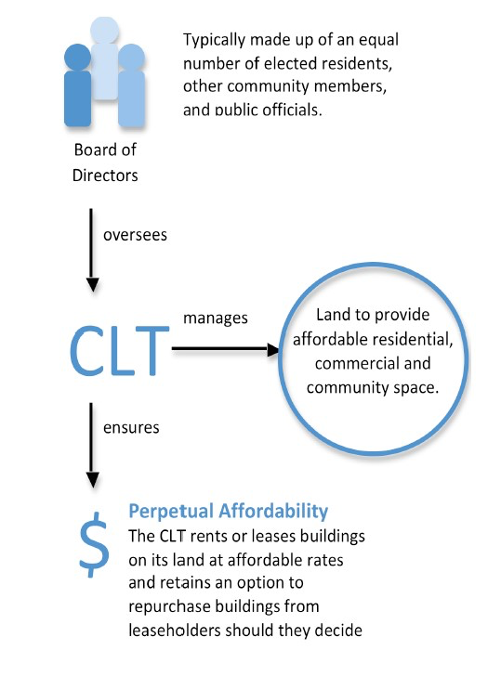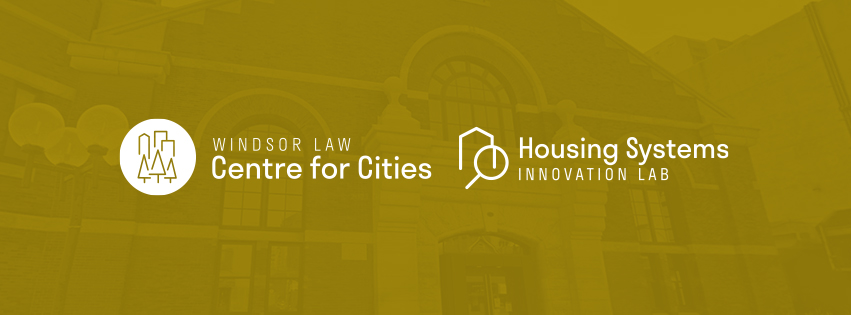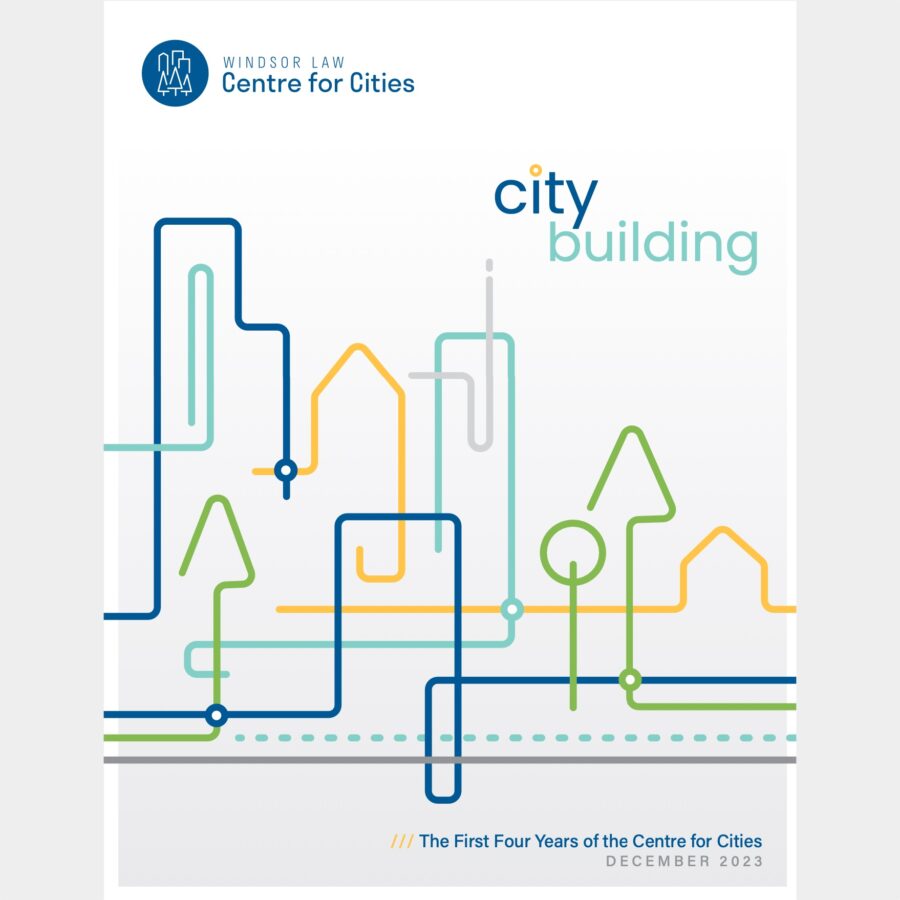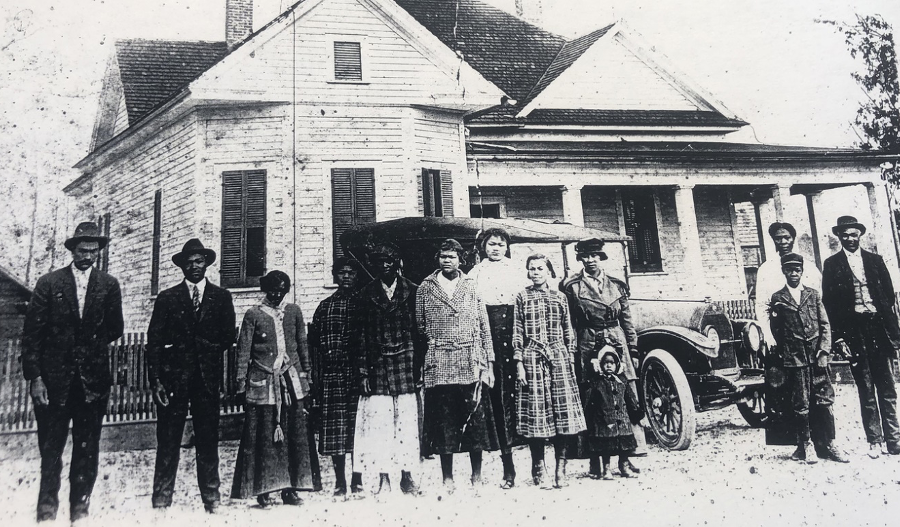
Blog Series: Exploring the Potential of Community Land Trusts, Part 1
An Introduction to Community Land Trusts and their Use in Canada
(20 August 2021) by Princess Doe
This is the first of a three-part blog series on Community Land Trusts (CLTs). This first post provides an overview of CLTs and their history, and provides some examples of CLTs currently functioning in Canadian cities.
The unaffordable housing crisis continues to be one of the most pressing issues in Canada. Typically associated with major metropolitan centres like Toronto and Vancouver, exponential increases in rental and housing prices are now reaching historically affordable cities such as Windsor. This is a cause for great concern particularly for Indigenous, Black, racialized, and newcomer populations that continue to face discrimination and inequitable access to affordable housing options in Canada. For example, Statistics Canada reported that in 2017 only 45% of the Arab population, 41% of Latin Americans, and 40% of the Black people owned a home in Canada. For White or “non-visible minorities”, the homeownership rate is 70%.
Various legal and policy tools are being considered by governments as residents fear displacement and gentrification in communities their families have called home for generations. CLTs are one potential solution to address these concerns, and can centre equitable placemaking and countering anti-Black racism in city-building. CLTs have been most common in the United States and parts of Europe, while there are only a small number in Canada. However, CLTs are receiving increasing attention today in Canada, with the federal government recently announcing up to $2 million in funding to support this housing solution.
A Community Land Trust is a non-profit corporation that obtains land, housing, and/or commercial buildings for the benefit of the community in which it exists. Centring a human rights-based approach to housing, the goal is to remove land and housing from the real estate market through purchase or donation. The land is then held perpetually in trust to preserve the affordability of that land and housing asset. CLTs are designed to be community- and member-based entities that are legally governed by an elected board of directors. A board of directors can be comprised of lease-holders, renters, community members, public servants, governments, and/or non-profit organizations.
CLTs’ history is rooted in the Black civil rights movement, with the motto that “cooperative living, learning, and earning and doing together empowers a collective group of people”. The first CLT was established in the late 1960s by African-American farmers in Albany, Georgia. Their initial goal was to increase their economic and political independence by creating new land tenure through a community lease controlled by a non-profit organization.
Indigenous understanding and principles of relationship with the land also influence the objectives of CLTs, “reflecting the understanding that all land and all of its natural resources are not the result of human effort, and therefore cannot be owned by property.” Partnerships between municipal governments and CLTs have proven to be a significant way to support low-income and historically disenfranchised communities. For example, in an aim to address racial inequalities in community and home ownership, the City of Seattle announced it would transfer a decommissioned fire station to the Africantown Community Land Trust, with a key goal of having Black-led community organizations acquire underutilized public property.
Hogan’s Valley Community Society, a Black-led community land trust in Vancouver, is working towards a similar goal to protect a neighbourhood for public use under a long-term lease. Hogan’s Alley was a historically Black and immigrant neighbourhood until the 1970’s when the City of Vancouver displaced the communities through an “urban renewal” program, building viaducts that were ultimately never used. The removal of these viaducts has presented an opportunity to protect the land for these communities under a CLT.

CMP Milton Parc, Montreal
Image credit: https://alchetron.com/Milton-Parc,-Montreal
Another well-known CLT in Canada is the Parkdale Neighborhood Land Trust. This CLT was developed to combat gentrification and unaffordability in the Parkdale neighbourhood of Toronto. The neighbourhood consists of many low-income and migrant communities, as well as communities of persons living with disabilities, facing food and housing insecurity. Communauté Milton Parc (CMP) in Montreal is a long-standing co-operative comparable to a CLT. In the 1970s, a private developer bought 90 percent of the housing in Milton Parc, one of the city’s oldest neighbourhoods. The homes were going to be demolished and new market housing constructed would have become unaffordable to the original residents. After initial demonstrations and marches, the community mobilized to form CMP with the help of public authorities. This secured the tenancy for all those living in the housing, even after renovations.
It was recently announced that the City of Toronto and the Toronto Community Housing Corporation (TCHC) will transfer 82-single-family homes and small buildings with a total of 154 units in Toronto’s west end to the Parkland Neighbourhood Land Trust, partnering with the YWCA as the operating partner. The CLT for the Friends of Kensington Market in Toronto has also recently acquired buildings for residential and commercial use. The aim of the Kensington Market CLT is to keep Kensington affordable for vulnerable and long-term renters and small business owners. Further, there is community organizing for the federal government to keep a historic Canada Post building on Queen Street West in Toronto publicly owned to ensure any housing it provides will be affordable.
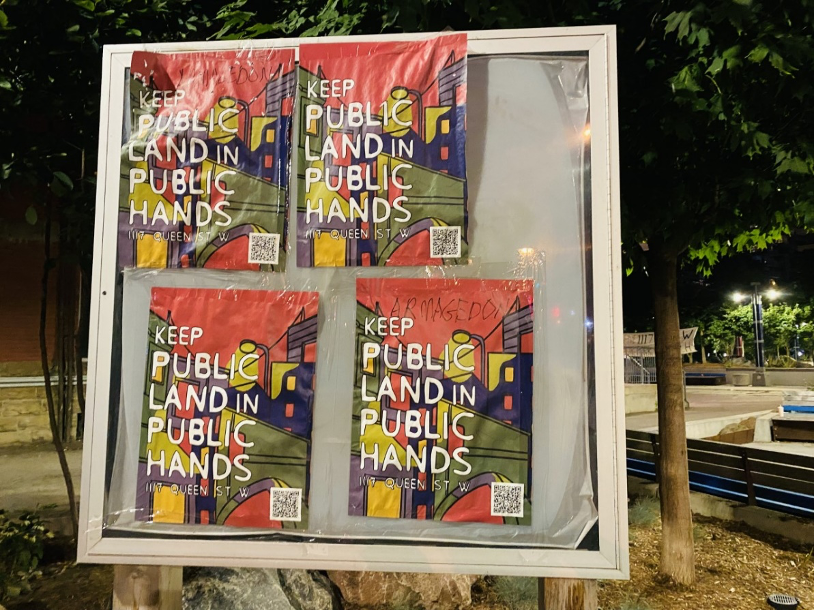
1117 Queen Street West, Toronto. Image credit: Anneke Smit
Community organizers and city governments should consider CLTs as an alternative approach to development and ownership for underutilized city-owned properties. While CLTs have been historically used to address housing, they can also be used for leasing affordable spaces to community groups, agricultural cooperatives, local-serving businesses, and social interests, as well as building community planning capacity and leadership.
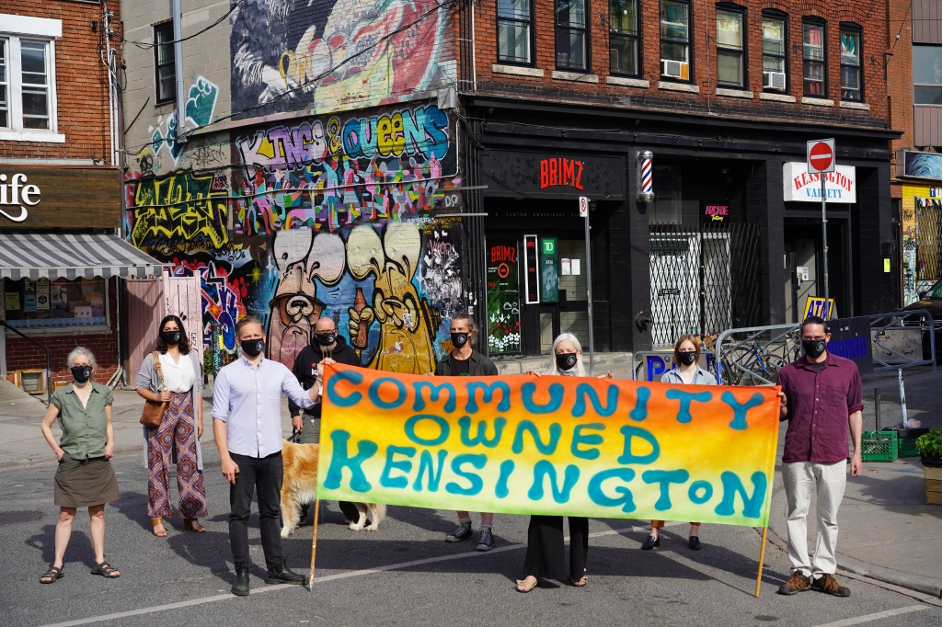
Kensington Market, Toronto
Image credit: www.kmclt.ca/newsletter/
The second post in this series will go further in-depth into how Community Land Trusts function and how they differ from other forms of social housing, and will explore the municipal tools that can support their creation. The final post will return to the question of the potential of CLTs in Windsor, Ontario, focusing in particular on the potential of using a CLT for two historic adjacent downtown properties.
Princess Doe (she/her) is a rising third-year JD student at Windsor Law and a Student Research Associate for the Windsor Law Centre for Cities.
Main image credit: The New Communities Farm, first Community Land Trust ever. https://www.yesgp.org/community_land_trusts_socializing_capital
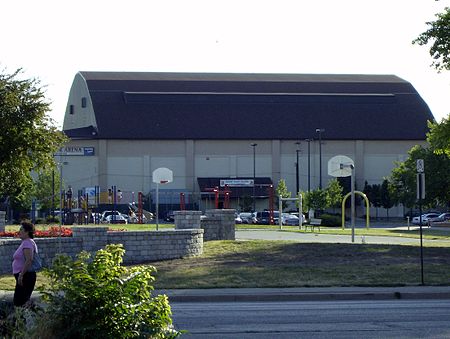
Blog Series: Exploring the Potential of Community Land Trusts, Part 3
How Would They Look in Windsor? (21 September 2021) by Princess Doe This is the final post of a three-part…
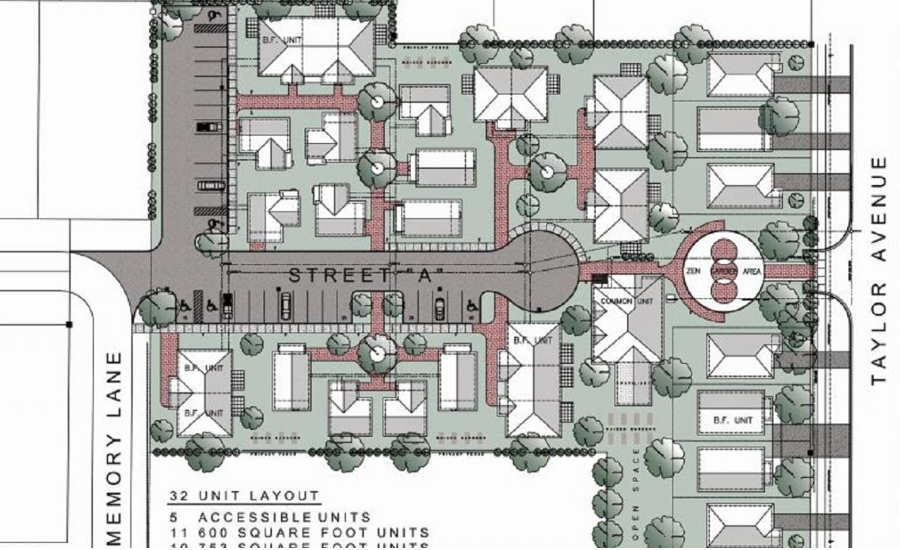
Blog Series: Exploring the Potential of Community Land Trusts, Part 2
How Do Community Land Trusts Work? (9 September 2021) by Princess Doe This is the second of a three-part blog…
